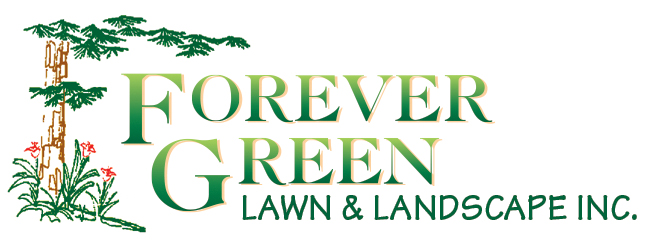One of the most common aspects of commercial landscape maintenance that even professional landscapers take for granted is how to effectively and sufficiently water lawns, shrubs, trees, and plants. When it comes to irrigation, it’s vital to remember that all plants have different watering needs based on a variety of factors including local climates, the current season, growing stages, type of plant, type of soil, etc. These are all factors that professional landscapers should in theory be aware of and always take into consideration,
With that in mind, here are a few watering myths that all commercial landscape contractors should know about.
Myth #1: Watering Your Lawn during the Day Causes Sunburn
We’ve already discussed the topic of sunburnt grass at length in a previous article, but it’s worth reiterating the fact that watering your lawn during the day doesn’t damage the blades in any way. A common myth that was disproved a few years ago is that on a particularly hot and sunny day, water droplets on your grass or other plants act as a magnifying glass and cause the plants to burn.
But the science just doesn’t support this theory. What actually happens when you water your lawn and plants on a hot day is that the water droplets evaporate at a faster pace than they would in milder temperatures, meaning you have to water more frequently in order to keep your plants sufficiently hydrated. The droplets evaporate so quickly that it would be impossible for them to do any harm to your plants, although frequent watering might hurt your bank account a little.
Myth #2: All Plants Need One Inch of Water
Again, this is a blatant mistruth or misconception because not all plants require the same conditions for survival. Some plants need more sunlight and frequent watering, while others prefer shade and less moisture. It’s up to you and your commercial landscape contractor to research the survival needs of each plant, including how frequently and how much they need to be watered.
Keep in mind that a well-hydrated and nourished root system is the catalyst of a healthy plant.
Myth #3: Wilted Leaves Indicate It’s Time to Water
The solution to wilted leaves isn’t to overwater or even minimally water your plants. Just because a plant’s leaves are wilted, that doesn’t mean the root system is dry or dehydrated.
Depending on the heat intensity from the sun, it could just mean that the sun is drying the leaves out without harming the roots of the plant at all (re: Myth #1). Grass and plant roots require a certain combination of water and air to stay hydrated and breathe, respectively. Air pockets in the soil allow your plant roots to breathe and cultivate nutrients as needed. Filling those air pockets with too much water can actually drown the roots and cause them to develop diseases, and eventually die out.
Wilted leaves aren’t always caused by a lack of moisture. Root diseases and invasive insects such as borers are oftentimes the culprits. To remedy wilted leaves, it’s important to get down to the root cause of the problem first.
Myth #4: It’s Good to Water Your Lawn or Garden at Night
False. In fact, watering your garden or plants at night is a major landscaping faux pas that can lead to extensive damages and diseases such as fungal developments. This is especially true for healthy grass which tends to attract more mildew and fungi in the dark.
These organisms can be harmful to your plants as they feed off of the nutrients and oxygen your plants need to survive.
Myth #5: You Don’t Have to Water if It Rained the Day Before
While it’s nice to wake up and realize that Mother Nature has already watered your plants for you, that doesn’t absolve you of your watering duties for the day. It actually depends on how much rain we’re talking about and how much water each of your plants need on a daily basis. If there was a full-blown thunderstorm with more rain on the way and your soil is noticeably moist, then you can definitely skip watering for that day.
But if it was just a light drizzle in the early morning and the rest of the day is predicted to be a scorcher, then you should definitely water your plants accordingly. Once again, there are a lot of factors to take into consideration with this one, so always use your best judgement based on the types of plants you have and the expected forecast for the day.
Myth #6: It’s Impossible to Overwater a Plant
Actually, overwatering a plant is just as bad as under-watering. It can lead to diseases such as root rot, which kills the plant from below the surface of the ground. As mentioned, it’s important to research the watering and other survival conditions each of your plants need to guarantee a long and healthy lifespan.
Myth #7: You Don’t Have to Water Drought-Tolerant Plants
It would actually be more accurate to say that drought-tolerant plants don’t need to be watered as much. They still require some level of care and watering. Many varieties of succulents, for instance, only need minimal amounts of watering once every two to three weeks in the summer. An easy way to test whether they’re receiving enough moisture is to lightly pinch their leaves. If they feel brittle and too squishy to the touch, then that means they need to be watered. Firm leaves mean that they have enough moisture for the time being.
If you need commercial landscape maintenance in Brampton or anywhere else in the GTA, then FOREVER GREEN LAWN & LANDSCAPE INC. can help. We have over 25 years of experience building, maintaining, and managing commercial and residential outdoor spaces across Toronto and the GTA. Part of that experience is knowledge of different types of plants, their preferred care methods, and the types of climates they survive in. Contact us today to learn more.


